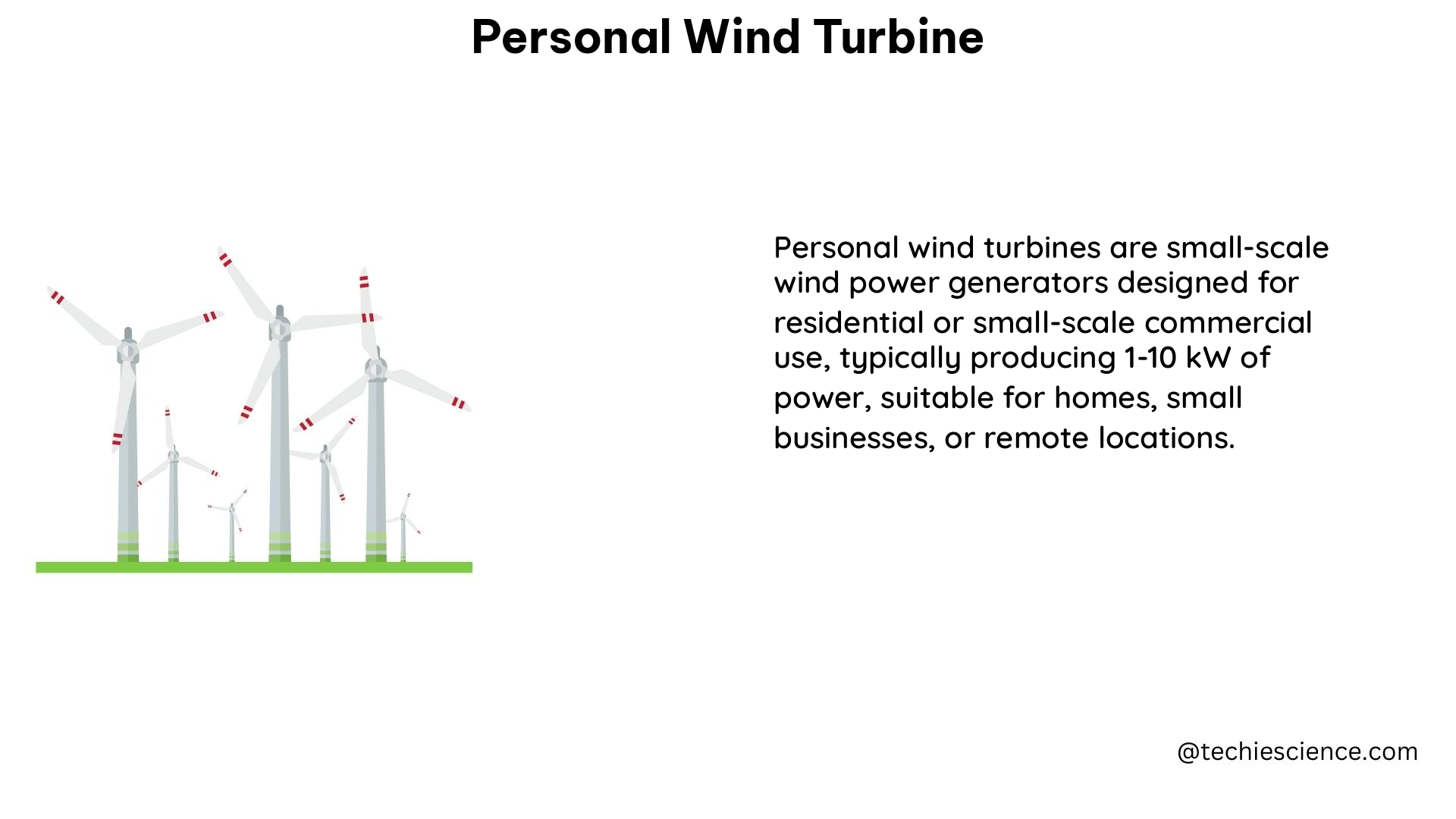Personal wind turbines, also known as small wind turbines, are designed to harness the power of the wind for residential or small-scale energy production. These compact and efficient systems offer a promising solution for individuals and communities seeking to reduce their carbon footprint and generate their own renewable energy. In this comprehensive guide, we’ll delve into the technical specifications, performance metrics, and key considerations for selecting and installing a personal wind turbine.
Rotor Diameter: The Heart of the System
The rotor diameter is a crucial factor in determining the power output and efficiency of a personal wind turbine. Typically, the rotor diameter for these systems ranges from 2 to 25 meters, with larger diameters generally corresponding to higher power generation capabilities. However, it’s important to note that the rotor diameter must be carefully selected based on the available wind resources, site constraints, and local regulations to ensure optimal performance and safety.
Rated Power: Unlocking the Potential

The rated power of a personal wind turbine represents the maximum power output that the system can generate under ideal wind conditions. This metric is essential in understanding the system’s capabilities and matching it with your energy needs. Personal wind turbines can range from as low as 100 watts to as high as 100 kilowatts, depending on the model and size. Careful consideration of your energy requirements and the available wind resources at your site is crucial in selecting the appropriate rated power for your personal wind turbine.
Wind Speed: The Driving Force
The wind speed is a critical factor in determining the suitability of a site for a personal wind turbine. Most personal wind turbines require a minimum wind speed of 4-5 meters per second (m/s) to start generating power, and they can operate efficiently at wind speeds ranging from 10 to 15 m/s. Understanding the wind patterns and average wind speeds at your location is essential in ensuring the optimal performance of your personal wind turbine.
Cut-In, Cut-Out, and Rated Wind Speeds: Balancing Performance and Safety
Personal wind turbines have specific wind speed thresholds that govern their operation:
- Cut-In Speed: The minimum wind speed required for the turbine to start generating power, typically around 4-5 m/s.
- Cut-Out Speed: The maximum wind speed at which the turbine can safely operate, usually around 20-25 m/s, to prevent damage to the system.
- Rated Wind Speed: The wind speed at which the turbine generates its maximum power output, typically between 10-15 m/s.
Carefully considering these wind speed thresholds is crucial in selecting the right personal wind turbine for your location and ensuring its reliable and safe operation.
Turbulence: The Unseen Challenge
Personal wind turbines are more sensitive to turbulence than their larger counterparts, and high levels of turbulence can significantly reduce the system’s efficiency and lifespan. Turbulence is usually measured in terms of turbulence intensity (TI), which is the ratio of the standard deviation of the wind speed to the average wind speed. Ideally, personal wind turbines should be installed in areas with low turbulence intensity, typically less than 15%, to ensure optimal performance and longevity.
Noise: Balancing Power and Comfort
One potential concern with personal wind turbines is the noise they can produce during operation. The noise level is usually measured in decibels (dB) and can vary depending on the model and operating conditions. While some personal wind turbines can generate noise levels as low as 45 dB, others may reach up to 60 dB or more. Careful selection of a turbine with low noise emissions and proper siting can help mitigate any potential noise concerns for nearby residents.
Efficiency: Maximizing Power Output
The efficiency of a personal wind turbine is typically measured in terms of its power coefficient (Cp), which is the ratio of the actual power output to the theoretical maximum power output. The maximum theoretical Cp is 0.59, but most personal wind turbines have a Cp of around 0.30-0.40. Factors such as blade design, generator efficiency, and aerodynamic losses can all impact the overall efficiency of a personal wind turbine. Selecting a high-efficiency model and optimizing the system’s installation can help maximize the power output and energy generation.
By understanding these technical specifications and performance metrics, you can make an informed decision when selecting and installing a personal wind turbine that best suits your energy needs and site conditions. Remember to always consult with local authorities and certified professionals to ensure compliance with regulations and safety standards.
Reference:
- Small Wind Electric Systems from the U.S. Department of Energy.
- Small Wind Turbine Global Market Study from Navigant Research.
- Small Wind Turbine Performance and Energy Assessment Certification Program from the National Renewable Energy Laboratory.

The lambdageeks.com Core SME Team is a group of experienced subject matter experts from diverse scientific and technical fields including Physics, Chemistry, Technology,Electronics & Electrical Engineering, Automotive, Mechanical Engineering. Our team collaborates to create high-quality, well-researched articles on a wide range of science and technology topics for the lambdageeks.com website.
All Our Senior SME are having more than 7 Years of experience in the respective fields . They are either Working Industry Professionals or assocaited With different Universities. Refer Our Authors Page to get to know About our Core SMEs.